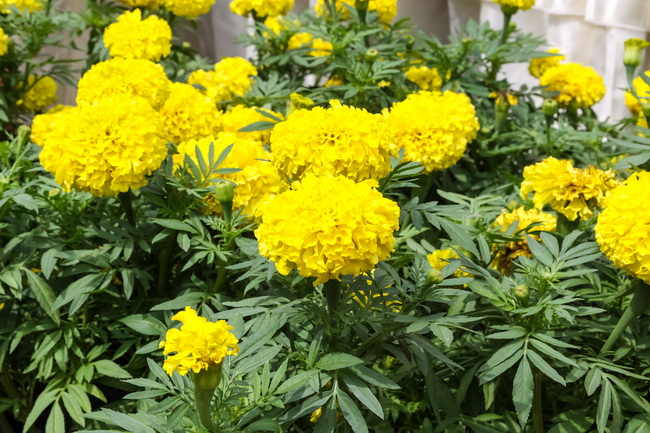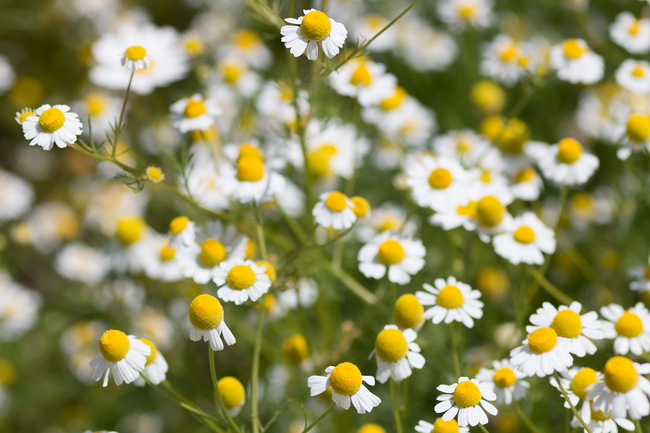- Make It Yourself Lavender Heart-Shaped Bath Bombs!
- 20 Things You Never Knew About “Down There”
- 12 Best Foods For Those Suffering From Arthritis Pain
- 12 Personal Hygiene Mistakes Almost Everyone Makes (Mom Never Told You About #4!)
- 15 Medicinal Plants And Herbs From The Cherokee People
- 12 Mind-Blowing Benefits Of Drinking Coconut Water During Pregnancy
- 12 Outstanding Winter Foods That Won’t Fatten You Up Like A Christmas Turkey
Best Plants for Repelling Ticks and Fleas Naturally

Photo credit: bigstock.com
Springtime is here and you know what that means: lots of sunshine, warmer weather, time for gardening and spending more time outside…but it also means its flea and tick season.
You could spray your yard with toxic pesticides or sprinkle it with poisonous granules that give off their poison for months; isn’t that a nice thought? Poison being spread throughout your yard– the yard where your children play and your pets live– for months at a time.
Or you could add some plants to your garden that will naturally repel fleas and ticks. A few plants put in the right places will minimize, and perhaps prevent all together, the invasion of these ugly, biting bugs. Plant these around the perimeter of your yard or around the lawn area where your children play, or around Fido’s dog house.
Many of these plants are really beautiful, too, most of them with a very pleasing fragrance to us. Some of these plants also repel flying insects such as gnats and mosquitoes as well, which means some of these plants work double duty against those annoying summertime bugs.
Keep reading so you can start making plans for your spring time garden now and avoid that summertime plague of fleas and ticks later. You have a beautiful garden to show for it as well.
1. Lavender
You might not know it, but lavender is a part of the mint family. Lavender smells so sweet in the garden and has beautiful flowers most of the year. It not only repels fleas and ticks, but also mosquitoes and moths. Who wouldn’t love a yard surrounded by beautiful lavender plants? Find out also how to make lavender bath bombs.
2. Rosemary
Another member of the mint family, rosemary grows into a small bush, so you can plant several around the perimeter of your yard. It has beautiful blue flowers in the late spring and most of summer and you can use the leaves in cooking or for a terrific tea. Rosemary gives off a wonderfully pleasing scent when the wind blows through it or when you brush up against it.
3. Feverfew
This is a great choice for the garden or to grow in pots around your patio as it not only repels fleas and ticks, but mosquitoes and other flying insects. This works best when used in conjunction with other plants such as lavender or citronella grass. You can also use feverfew to treat, you guessed it, fevers, headaches, feelings of anxiety, as well as bloating.
Continue to Page 2

Photo credit: bigstock.com
4. Marigolds
Marigolds are absolutely beautiful flowering plants that are best used in conjunction with other plants. Marigolds are another plant that repels fleas, ticks, and mosquitoes. If you have a vegetable garden, plant some marigolds in and around your vegetables. The roots have a compound called thiopenes, and repel cabbage maggots, white flies, aphids, and other bugs. Marigolds are great at protecting tomato plants from those ugly little bugs that suck the juice out of your veggies.
5. Citronella Grass
You’ve probably burned candles or tiki candles with citronella oil, but did you know that that oil comes from citronella grass? This is not only a great way to protect your family from fleas and ticks, but from mosquitoes as well. You can plant citronella grass around your garden and in-between other plants such as lavender or feverfew.
As a side note, many people report that citronella grass has a type of calming effect on their dogs, stopping them from excessive barking. Your neighbors might be grateful you planted some if you have a breed that likes to bark. Or you might want to offer that neighbor with the noisy pooch some citronella grass.
YOU MIGHT ALSO LIKE: 20 of the Most Underused and Little Known Healing Herbs on the Planet
6. Catnip
If you own a cat, you can’t go wrong with this one. This is another member of the mint family that is great for repelling fleas and ticks, as well as making your cat super happy. Be careful where you plant this, however, as it will attract outside cats. Which means, don’t plant it anywhere that you don’t cats walking around or rolling around, such as on your prized flowerbeds.
Continue to Page 3

Photo credit: bigstock.com
7. Chamomile
Another plant that does more than its share of work. Chamomile leaves and flowers can be dried for a calming cup of tea. It’s also great at repelling fleas and ticks, but flies as well. This plant has dainty, daisy like little flowers, so it’s cute to have around. If this were not enough, for some reason, chamomile keeps other plants in your garden healthy and happy. An old family remedy for a sick plant or tree is to plant chamomile next to the ailing plant or around the sick tree.
8. Sage
Another beautiful plant that does double duty. With long spiky flowers in a velvety purple and white, this plant looks pretty and you can dry the leaves and use them to make tea or put them in your cooking dishes. It can grow up to three feet tall, but you can always trim it back if it gets too unruly. Oh, yes, it also repels those ugly fleas and ticks!
9. Lemon Grass
Another beautiful plant that you can place next to your lavender or citronella grass. It has many medicinal uses as well as naturally repelling fleas, ticks, and mosquitoes. Yes, it really does smell like lemon, which makes this heavenly when planted next to windows so you can enjoy the smell day and night.
SEE ALSO: 12 Tips to Protect Yourself from Bug Bites
10. Chrysanthemum
Sometimes simply referred to as mums, these beautifully flowering plants that come in a wide variety of styles and colors are perfect for the lazy gardener. Plant them once. They will bloom in the summer, and then die back in the fall. Trim them to the ground, cover them with mulch in late fall, and they will regrow in the spring. Mums are also great at protecting other plants from spider mites, harlequin bugs, leafhoppers, and aphids.
Realistically, none of these plants will actually kill bugs, but they will repel them. When it comes to fleas and ticks, we need all the help that we can get!
References:
































